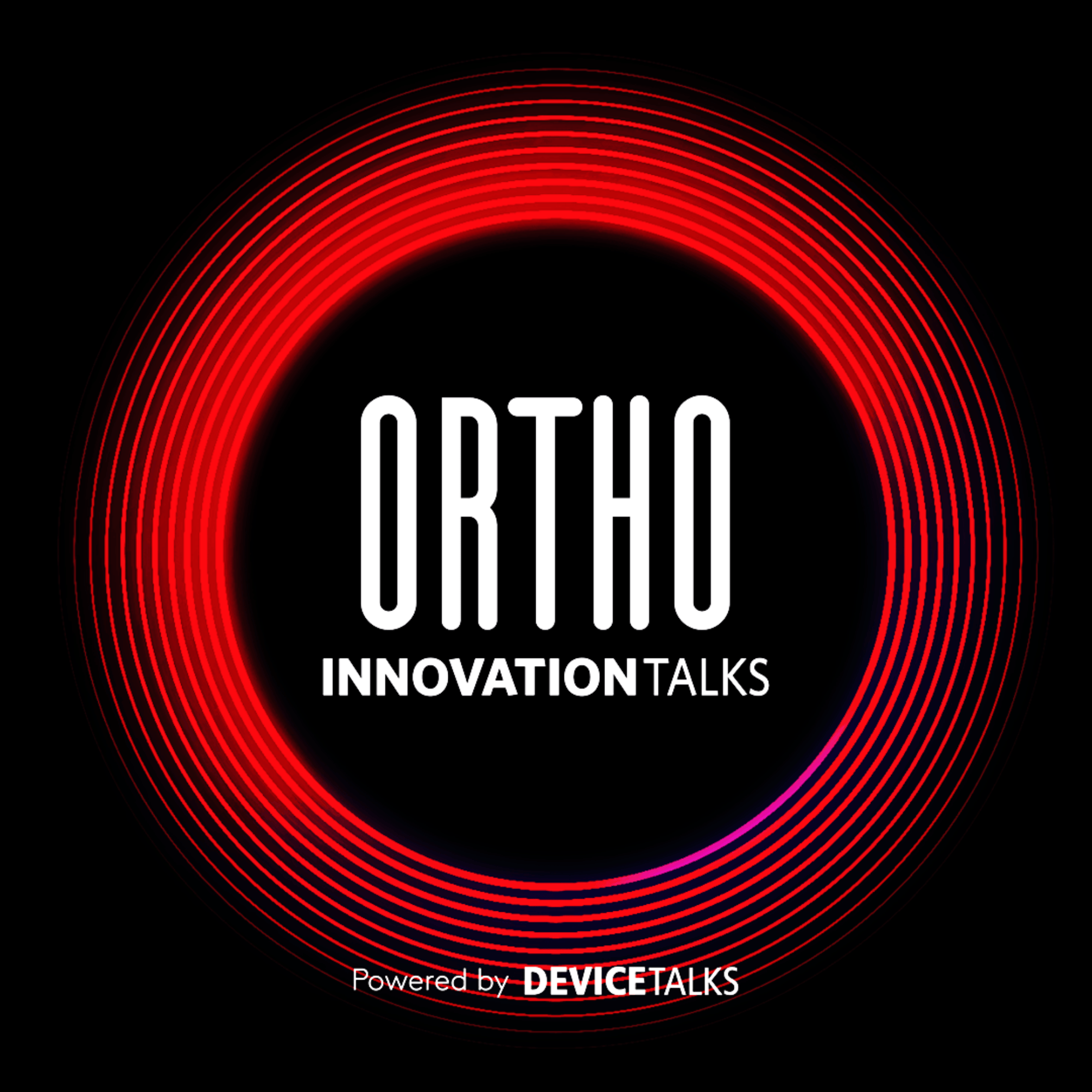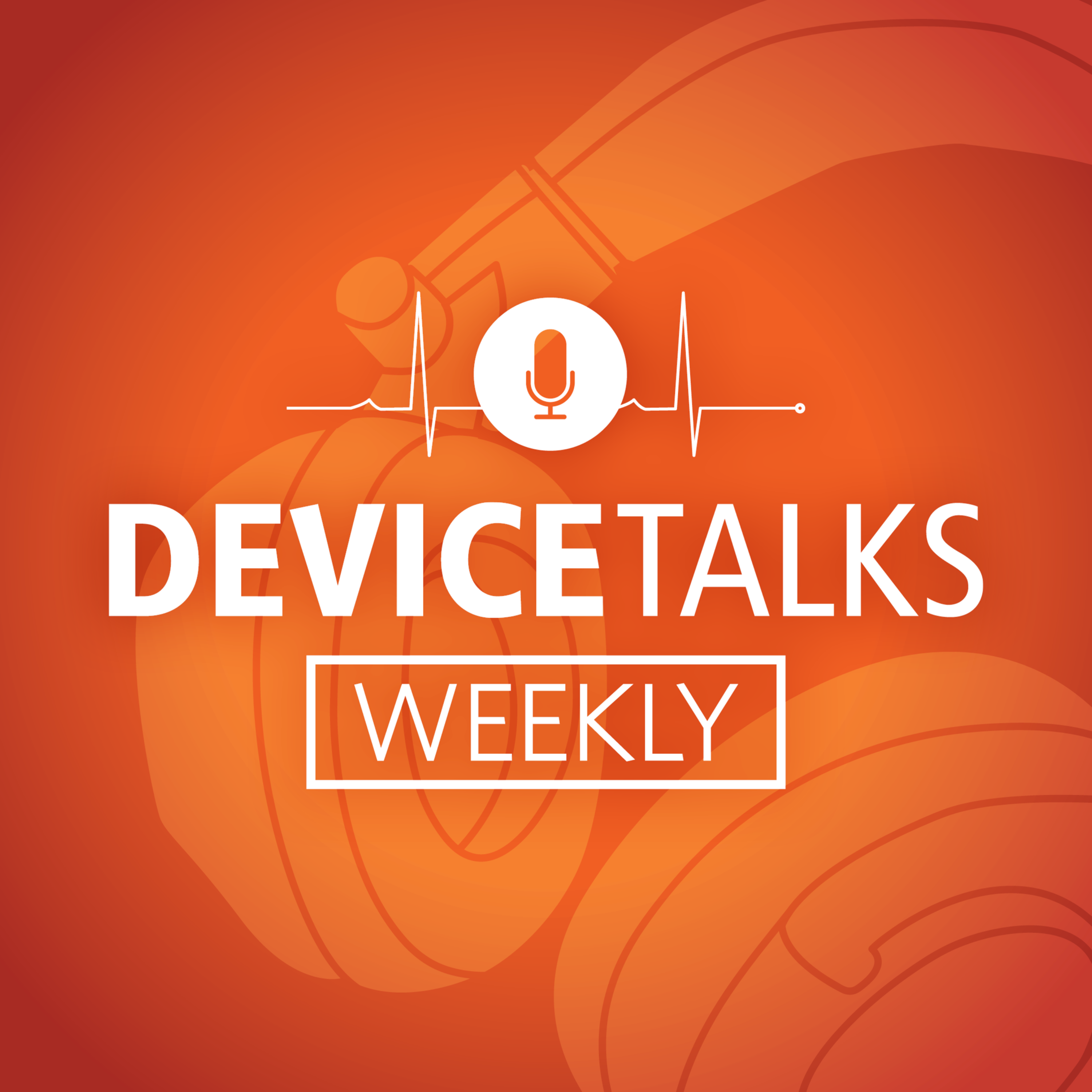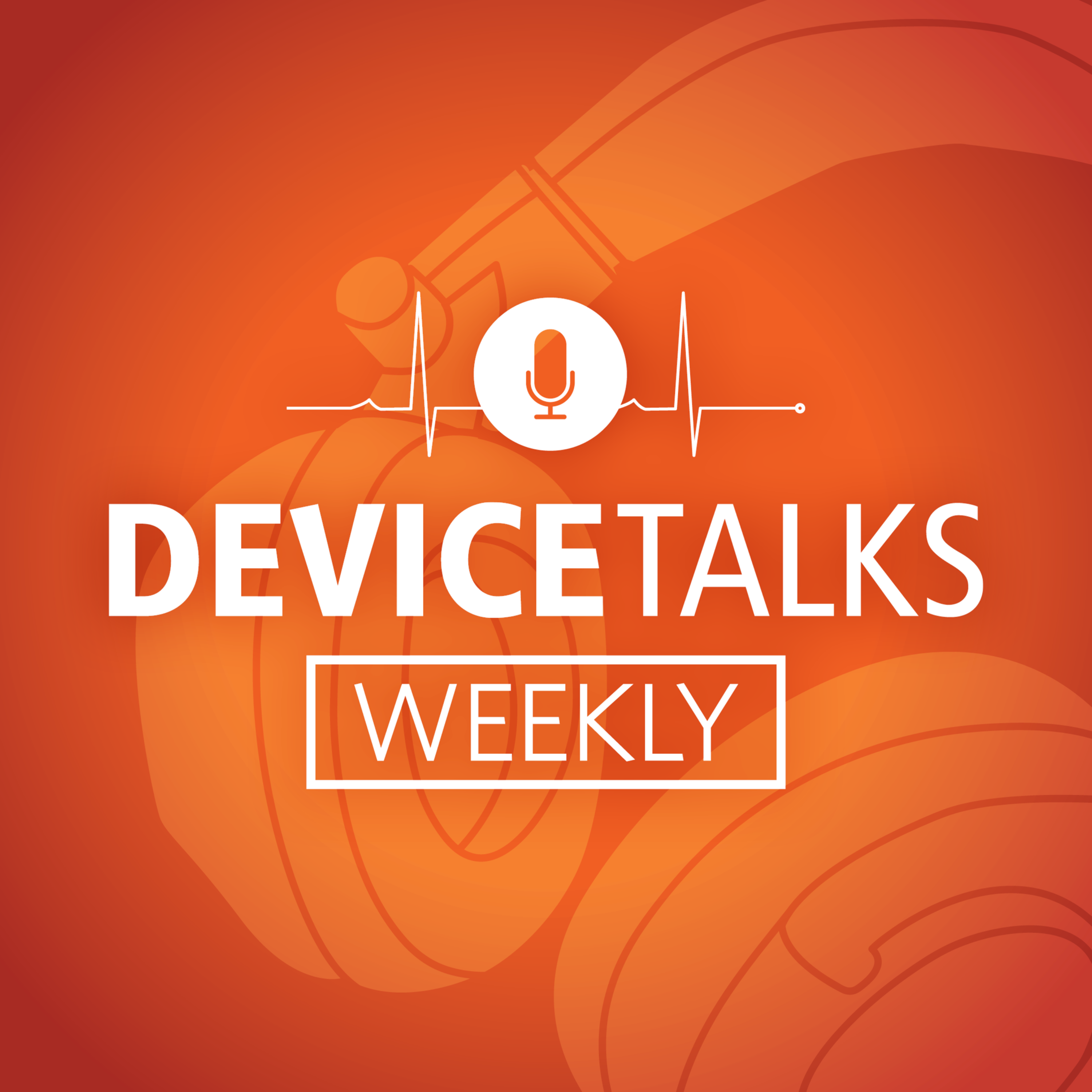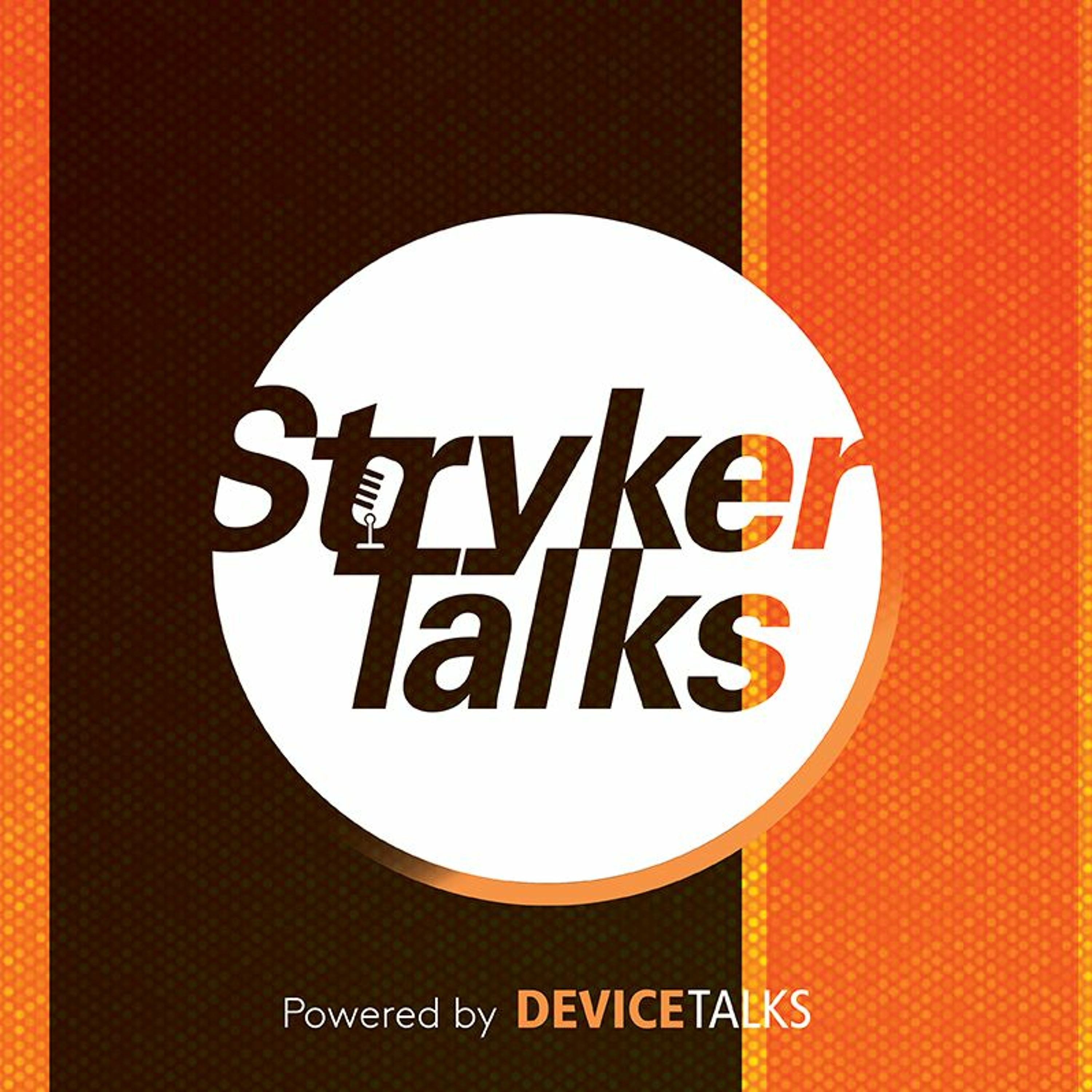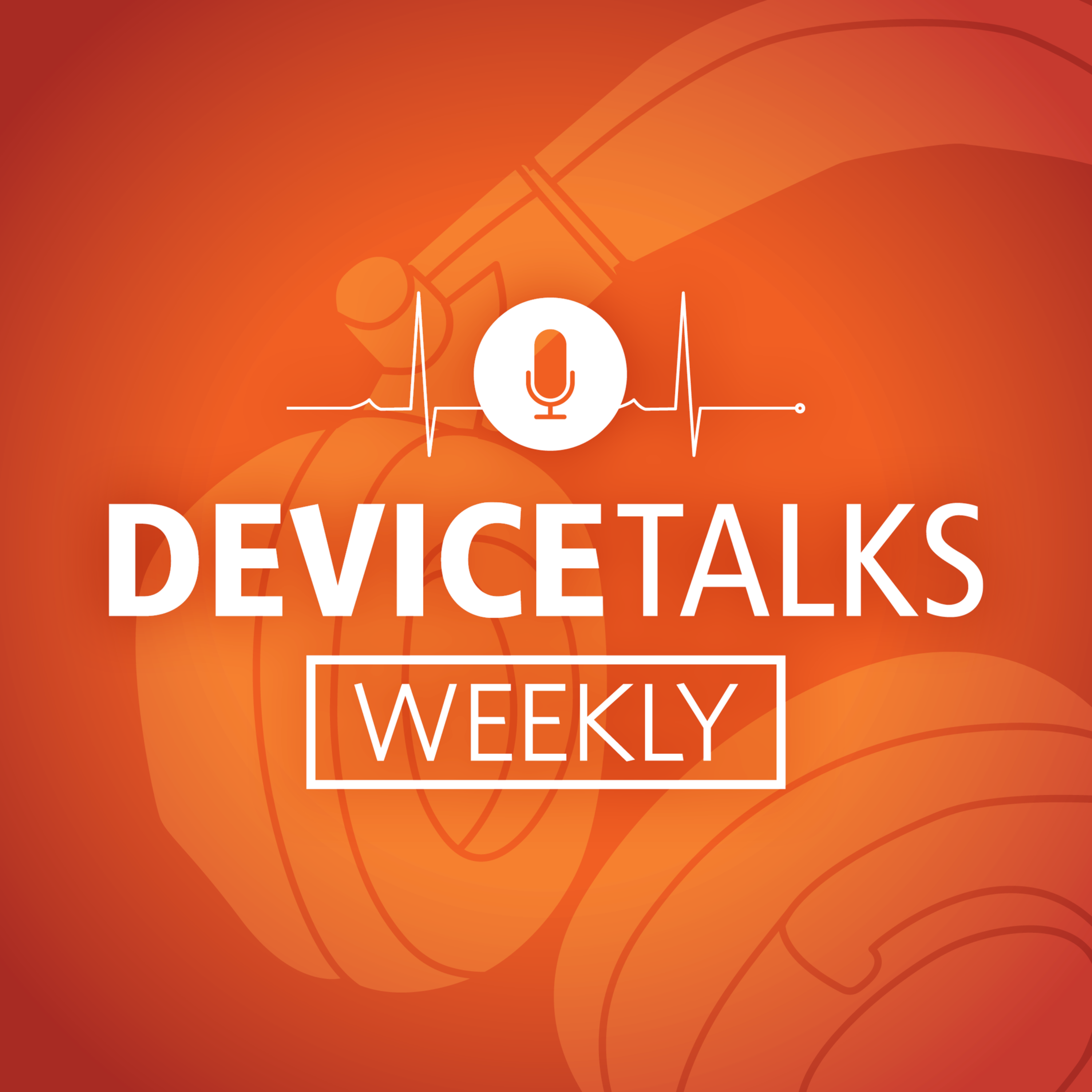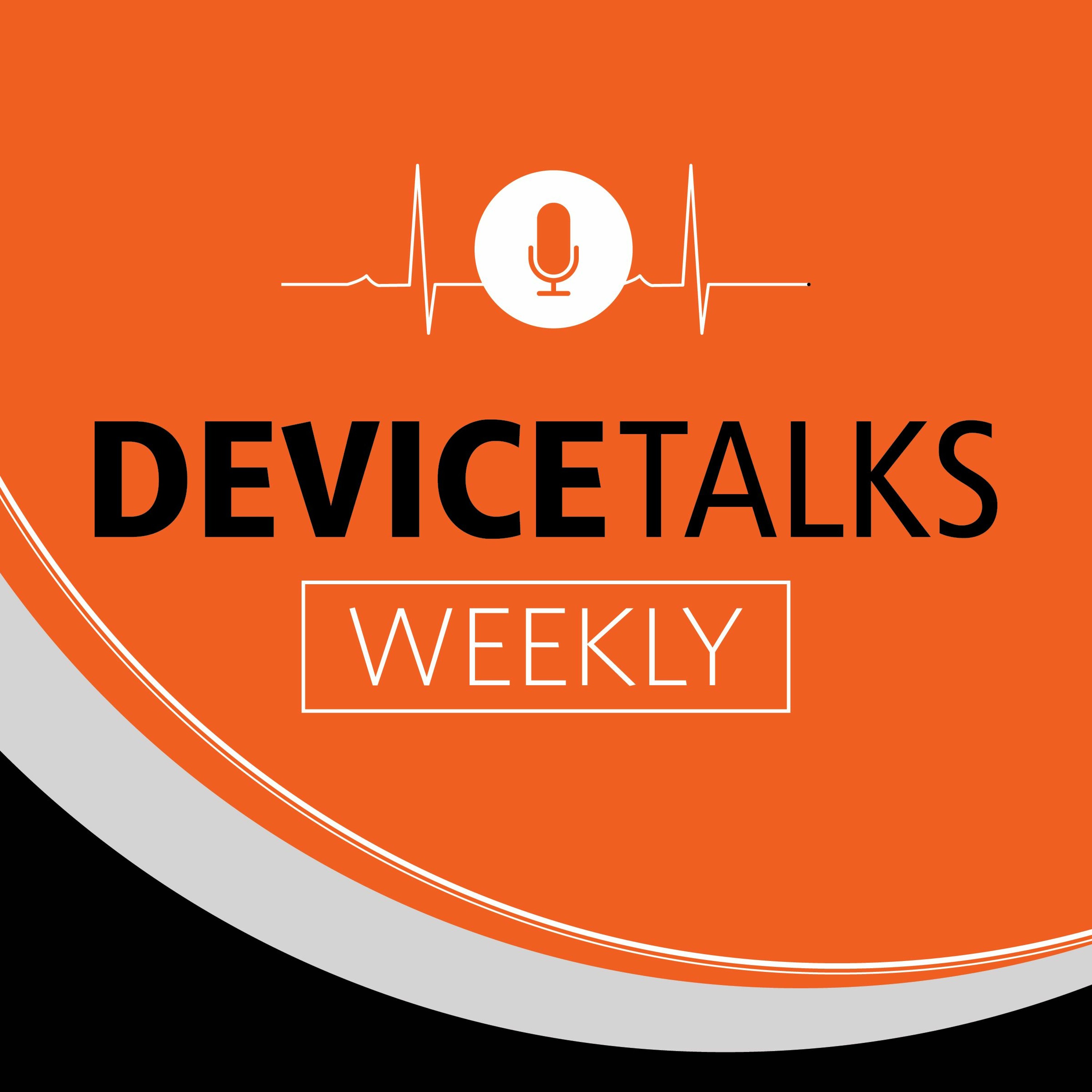Episode Transcript
All right, it’s Tom Salemi here. Welcome back to the Ortho Innovation Talks podcast. Another great conversation for you from the leaders of Enovis. My conversation today is with Brad Batte. He is the president of the Regen Division at Enovis. We’re going to talk about, of course, his career leading to Enovis. He’s got a longtime Stryker. But moreover, we’ll get into Enovis’ focus on this unique technology for caring for patients. We’re talking about devices that stimulate the body to accelerate natural processes, to help with bone growth, to help with other ways of quicker and more complete recovery from injuries. So it’s not an area of Ortho that I talk a lot about, so I was really excited to learn more about it. So once again I’ll be speaking with Brad Batte. He is president of the Regen Division at Enovis. Before we begin this conversation, though, I want to invite you to subscribe to the DeviceTalks Podcast Network so you don’t miss a future episode of Ortho Innovation Talks or our other great podcasts highlighting the leaders in MedTech and some of the more critical spaces within our industry.
Very happy to launch a new podcast. Actually, he was launched by our managing editor, Kayleen Brown, that’s focused on MedTech leaders. It’s the Women in MedTech podcast. We rolled out the first episode just recently and more are to come, so make sure you subscribe to the DeviceTalks Podcast Network. You can also look for the Women in MedTech podcast with Kayleen Brown and subscribe to that individually as well. So lots of great things coming your way from DeviceTalks. We have our great meeting lineup in 2026.
Our DeviceTalks Tuesday’s lineups are rolling out and you won’t miss any of it if you subscribe to or link to DeviceTalks on LinkedIn. So follow us there, follow me there, follow Kayleen Brown there. You will get much wiser and I hope, greatly entertained by what we’re putting out here at DeviceTalks. So without any further delay, once again I’d like to reintroduce or introduce again my conversation with Brad Batte, president of the Regen Division at Enovis.
Well, Brad Batte, welcome to the podcast.
Thank you, sir. Appreciate you having me.
My pleasure. I don’t know a lot about the Regen part of orthopedics. We focus so much on the metal and the other part, so I’m really
eager to learn more about that, but
would love to first understand your background a bit. We were talking before I pushed record. Know you’re from Louisiana. How’d you find your way into, into the MedTech industry?
Yeah, so right out of college I, I worked in health services, healthcare services, and, and that was my first opportunity to, to work in the hospital environment. So I got a chance to interact with, with surgeons and administration and, and from being there I really realized that that was something that I wanted to try to make a career of. So had the opportunity to make some connections and I got a job working for Stryker and spent almost 17 years at Stryker. So once I went over to Stryker, I did sales, I did some operations roles and sales management and kind of one thing, one, one thing’s kind of led to another and ultimately ended up at Enovis in 2017.
So let’s talk now about your time at Enovis.
How did you come to join the company?
Well, once again, you know, I had been in healthcare in that environment for a long time and you build relationships. And I knew some folks, Enovis, which was DJO at the time, before Enovis took over with the acquisition, and you know, I started asking questions about what’s, what’s the company like, what’s the culture like, what is the product offering and how do you connect with, with patients and what was unique. And when they told me about really what DJO and Nova said had had to offer at the time was just being able to touch patients throughout the whole continuum of care. So, you know, uniquely we have the position and the product offering to work with patients before surgery, during the surgical intervention and then from a rehab standpoint, which a lot of other MedTech companies don’t, touch the patients throughout that full continuum of care. So that intrigued me from that perspective.
And then also just the environment, it’s a continuous, continuous improvement environment to where we’re always looking to get better and we have tools and resources that are at our disposal to be able to do that. So both of those things really intrigued me. And then also like I said, knowing people who worked here at the company at the time and who spoke highly of it made it make sense for me to make the move.
Okay, so how has the experience been moving into a orthopedics only largely company in the orthopedics industry? I’m sure you’ve touched it in your
past roles, but what is it about
Orthopedics that you connect with and talk a bit about succeeding in this industry?
Yeah, I think it’s, it’s all about, you know, once again, just having the patient’s best Interest at heart and knowing what the surgeons want and need and how to make their lives easier. So that was, it’s, it’s not that much different. What, you know, you’re either selling capital equipment or you’re, you’re selling something that they use on a day to day basis. And really how I interact with the folks, whether it was an endoscopy or on the surgical side over here or what we do at Regen is all kind of one and the same.
So let’s talk a bit about your portfolio. Give me a brief overview of the bone first, broadly of bone growth stimulation. Then we can get into what Enovis has. But just talk a bit about where we are with bone growth stimulation.
Yeah, so bone growth stimulation, when you think about it, for me, we fall within two larger categories. So you think about the fracture market and then you think about spinal fusion. So those, those are the patients that we really address, but we really hone in at a, at a deeper level with patients, a smaller fraction of the patient population within those environments. And those are the ones that deal with risk factors. So, you know, as we get older, you’re going to have folks that have obesity issues or diabetic or, you know, they’re just older in general or they’re smokers and, and in those type of situations, people don’t heal as easily as they naturally would. So those are the people who are perfect candidates for bone stimulation.
Because typically what bone stimulators do, and really to summarize it very simply, is it just mimics what the body would do on its own, but doesn’t have the ability to do. So because of some of the things.
That I just mentioned before we get into your, what you’re offering specifically, where does bone stimulation sort of fit into the clinical, the clinical setting like when, when, when, when are these devices used?
Is it after a surgery?
Is it after a fracture? When, when is it necessary?
So it’s after a spinal fusion, so it’s after surgery on the spinal side and then on the fracture side it’s, it’s after the fracture. But typically if you see that the fracture is not healing. So that’s where initially our products, we have two different products on the fracture side and one is ultrasound and one is CMF, which was more an electrical bone stimulator. So let me kind of walk you through that from, from the standpoint of what we had prior to our new product launch with Manafuse, all we had was a product that addressed non union indications.
So essentially you have a fracture and it doesn’t heal for a prolonged period of time, it’s considered non union. And then the, the surgeon can prescribe a bone stimulator to help it heal where it’s not going to heal otherwise. And a lot of times because of those risk factors we touched upon earlier, what we didn’t have prior to manafuse and after talking to our customers and really understanding what they needed was a product that could address something more on the fresh fracture side. So less complex fractures that happen on the fracture side and you’re trying to get it not to progress to that non union space, whether it’s, you know, like a distal radius or a mid shaft tibia type fracture, it’s not quite as complex.
But if you can intervene earlier and put a bone stimulator on it, which typically ultrasound is the one that’s indicated for that, then it keeps it from getting to the point of going to that non union space, which makes it a lot more complicated and costly to heal.
Why isn’t used for every patient? I understand why it’s necessary with someone who has risk factors, but wouldn’t it make sense for everybody to heal a little faster?
You’re speaking my language. I would love for people to do that. You know, a lot of surgeons have great success, you know, and if you’ve got a patient who’s healthy and just has a fracture fluky type deal, a lot of times they’re going to heal, you know, but the risk factor, risk factors make it a lot more complicated for that healing process. So, you know, what we don’t want to do is, is, you know, do something and put it on a patient that’s going to heal otherwise or doesn’t need that extra help, you know, so, but, but in situations where patients have the risk factors or there’s, there’s something that’s going to limit their ability to heal, a bone stimulator is a perfect thing that’s going to help get them where they need to be.
And where is the bone stimulator applied to the patient? Is it in the physical therapy clinic? Is it at home? Is it in the hospital?
It’s at home. At home, yeah. Yeah, you can do, you could do both. But it’s a device that you wear, the ultrasound device, you wear 20 minutes a day and it’s an external device.
The two electrical devices that we have on the CMF technology are 30 minutes a day. So what the surgeons really like and the physicians love is, is that the patients will comply, you know, because if you’re trying to say, hey Tom, I need you to wear something at your house eight hours a day or 24 hours a day. It’s a little bit more difficult to get patients to comply. But the low wear time with our products is something that’s very advantageous for them and it’s easy for them to do. You know, they can sit there and put on a bone stem.
If it’s a spinal unit, they put it on their, on their lumbar spine and they sit and watch a 30 minute show and they’re done for the day with their treatment. And same thing for ultrasound, 20 minutes a day at the, at the fracture site. And they get there, they get the benefit of that.
So once again, you kind of covered this already, but I just want to double check.
So you’re selling to the surgeons, you
want the surgeons to prescribe your product when necessary?
That’s right, yeah. So we go in, we work with surgeons, we explain the benefit of the product and how it helps the patients heal. And then they prescribed that product to the patients and then insurance typically will pay for the device in a lot of cases.
Okay, cool. So, and this is a separate code from reimbursement or is it part of the entire like fusion procedure?
It’s separate, this is a DME.
Okay, yeah. So, all right, so that certainly, that certainly helps with the sales, I’m sure.
Let’s talk a bit about your portfolio.
Specifically, what’s your top product?
Yeah, so our top product is our spinal stimulator and that’s Spinalogic. It’s been, it’s been a product that we’ve been selling for, for three decades and it’s got a ton of clinical efficacy reports and data that shows the benefit of that. So we’re about, you know, a larger percent spine more than fracture, but we’ve got a lot of focus on the fracture side. So our number one product currently is our spinal stimulator.
You’ve got about four looks like three products here. So let’s just walk through the rest of your portfolio. What, what’s next?
Yeah, so same thing. The spine is the Spinalogic. We just mentioned CMF, the OL1000, which is for the non union fractures and that’s applied at the fracture site. So if you’ve got a fractured knee or you know, wherever the case may be, you apply that device. Same thing, you wear it 30 minutes a day. Ultrasound is a 20 minute wear time and it’s applied at the fracture. And once again, that’s for less complex fractures early on from a fresh fracture standpoint that we can address and try to make sure that we keep the fracture from going to the place of non union.
So this is, and I’m sorry if
I’m not hearing it. So these are for,
you mentioned the knee for fractures of the limbs. I see things that look like probably a knee brace.
Are there elbow braces as well?
Are they all, Is it just for the knee?
What’s the area, what, what are the
parts of the body that can be served by the OL1000?
So it’s, it’s, it’s all bones. I mean, from that perspective. Yeah. So it’s basically, you know, knee, you know, humerus, you know, there’s, there’s different areas in that you’re going to break bone. That’s going to be a more complex fracture. That, that’s where you, you would put it on.
And when is it put on? I mean, someone presumably would have some kind of cast or something over it. How is it, how is it applied?
So it can be applied over a cast.
Oh, okay.
Yeah, yeah, absolutely.
Okay, great. And what about Manafuse? Let’s talk about that.
Yeah, so Manafuse is it’s applied with a gel and you know, so then you put the device, the electrodes on the device are directly, it’s on the skin directly versus over a cast. So that’s where it’s a little different than the CMF device. But it’s, you know, it’s applied that way. You apply the gel to the fracture site and then you. Basically what it’s going to do is it’s going to mimic the micro motion that you would normally get at the fracture site from a healing perspective. So it just, it enhances the body’s ability to heal after a fracture.
So you’re applying gel to the skin over the site and how is it transmitting energy to the bone and to the fracture?
Yeah, so it’s ultrasound and from the device it’s an ultrasound. So it’s a low intensity pulse ultrasound and it basically just stimulates at the fracture site to help the body heal.
And this is again something that’s done at home.
It is. It’s done at home and it’s a 20 minute wear time for that device. So once again, it’s very easy to get patient compliance.
Now look at the pictures. I mean people, people have it in their feet, on their ankles, on their clavicle, it looks like. So it’s everywhere.
Everywhere. Absolutely.
So how did you build this portfolio?
I see the Manafuse is acquired by Enovis from a company called ManaMed, I guess, or you acquired ManaMed.
How are you building out this, this region portfolio?
Yeah, so what we really want to do is, you know, just creative environment where patients heal. So, you know, we’ve had the CMF and the, and the Spinelogic and OL1000 in the portfolio for a long time. We looked at gaps in the portfolio and that’s why we went out and acquired the Manafuze product. And what we’re going to continue to do moving forward is look at those adjacent markets and additional indications that we can get the products approved for, to use. Because once again, when you’re running through insurance, you’ve got to have indications that are approved for the insurance to cover the device being prescribed by the physician. So we’ll continue to do clinical research and expand the ways that we can apply these products in areas where we haven’t before.
But that gives us the opportunity just to help patients that aren’t going to heal, heal.
What is the innovation like the R&D process like in Regen and in bone stimulation? Is there a lot going on? A lot of smaller companies? Is it mostly larger companies? Where’s doing the innovation and what’s the new technology? What do the new technologies look like?
Yeah, so because It’s a Class III device, you know, the barriers of entry are a little more complex, you know, so it makes it more difficult for those smaller companies to get in there. The investment’s pretty substantial to be able to get into the market. But from our perspective, you know, we, we believe in what we want to be is that company that is doing the innovation. So you know, that where we find a lot of innovation is, you know, whether it be prospective or retrospective studies with, with clinics and, and seeing what they’re seeing and where they’re having trouble from a healing perspective.
And then we look at indications and different areas where we can expand throughout the market. And the beauty from our organization is top down, this is an area where we have the commitment of the company to invest and we get that investment to do the clinical studies and the R&D research to see what we need to do and where we need to go next. And that’s kind of what we’re focusing on. And we’ve got a great selling organization who understands the clinical space and what the physicians are looking for. So they come to us with ideas.
We try to get the research done and we got the commitment of the organization to continue to build on it.
You know, so let’s, let’s, look forward. I’d love to understand where this space is headed and what, what, how does it fit into Enovis’ future?
Yeah. So how it fits in with Enovis in general is, like I mentioned, we really touched that continuum of care. So this is something that patients need to rehab and we want patients to live longer and healthier lives. And this is, this is something that we can provide in this environment to allow them to do so. So, you know, like I mentioned earlier, the commitments here for us to continue to invest, for us to continue to find ways to expand indications to touch patients more with bone stimulators and improve the efficacy in those areas.
And what we’re looking to do is just continue to grow the market and, and help folks as we get older, which we’re all going to do. We just stay healthy and active.
Excellent. All right. Well, it’s a great story, an interesting space, and a great place to be in. Thanks, Brad, for joining us.
Thank you. I appreciate it.
Well, that is a wrap. Thanks so much for joining us on this episode of the Ortho Innovation Talks podcast. Thanks, of course, to our friends at Enovis for making their leaders available. I hope you’ll follow us for future Ortho Innovation Talks podcasts or other great DeviceTalks podcasts by subscribing to the DeviceTalks Podcast Network on any major podcast player. You can also help yourself out by following me on LinkedIn, following our managing editor, Kayleen Brown, and of course, following DeviceTalks on LinkedIn. We’ll share our future content there as well, and you can learn about our great conferences and webinars. We have so much going on. So thanks again for being part of this episode of the Ortho Innovation Talks podcast. We look forward to bringing you another episode very soon.
